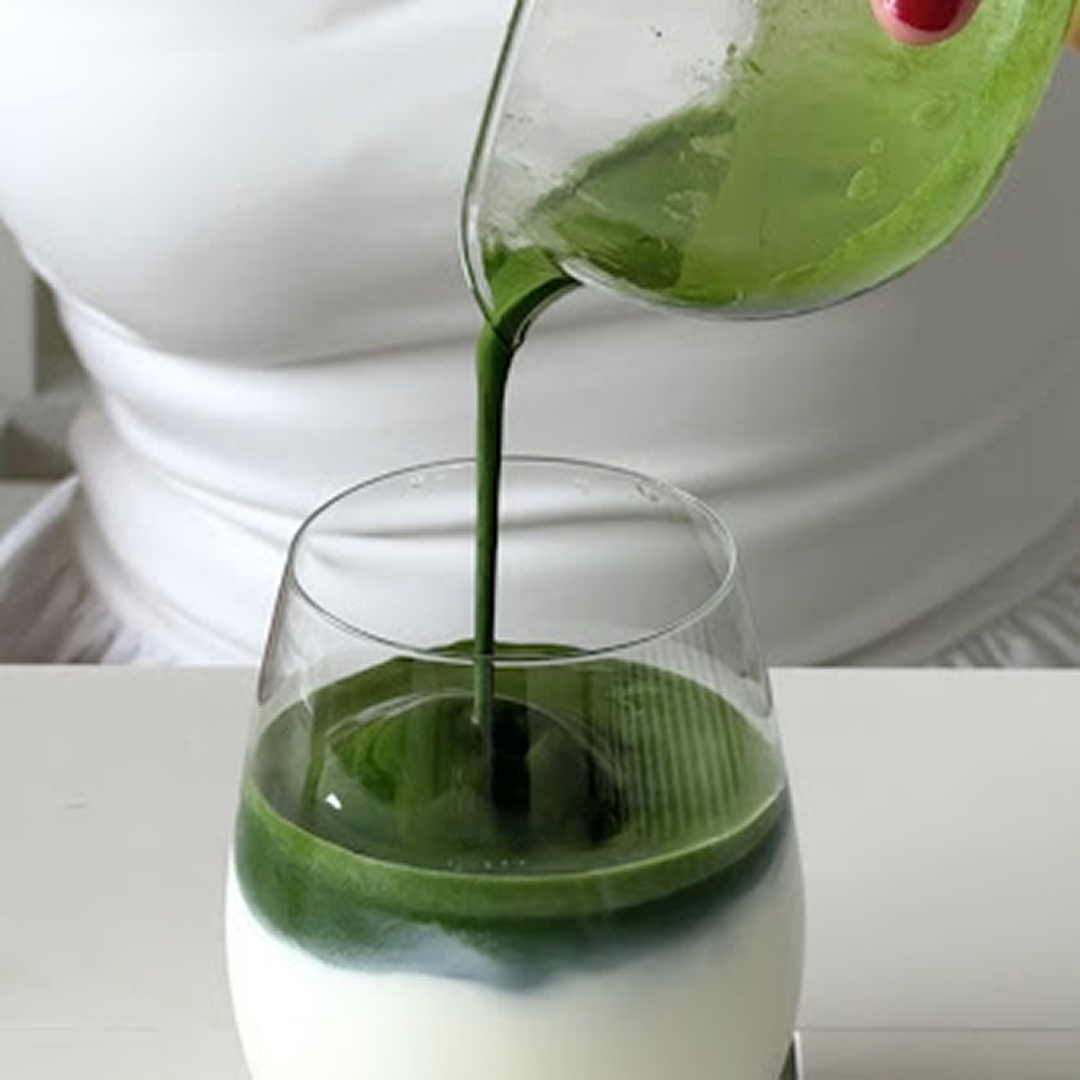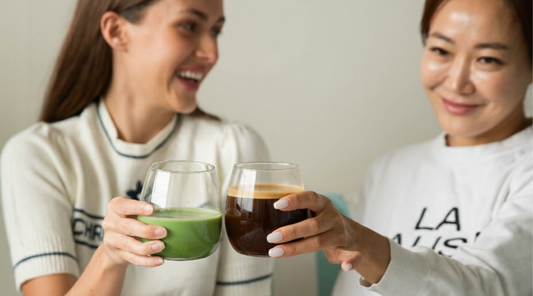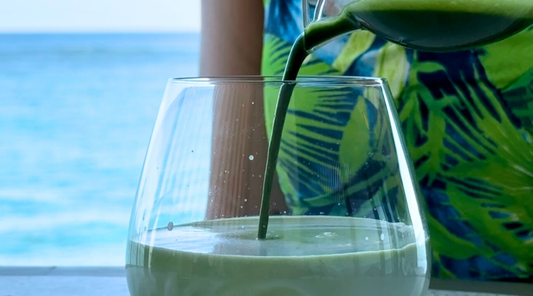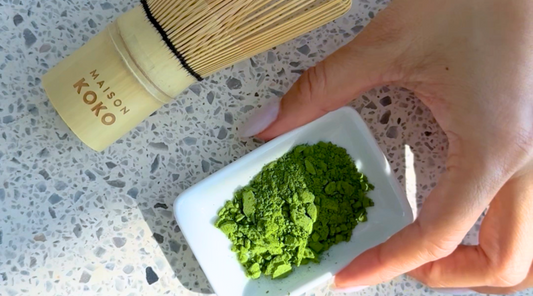
Saemidori vs Okumidori: Premium Japanese Matcha Cultivars Compared
Share
When you open a tin of matcha, you’re stepping into a tradition that stretches back centuries. Yet not all matcha tastes the same. Its character depends on the cultivar (品種, hinshu), the specific tea plant variety used. Among the many cultivars grown in Japan, Okumidori (おくみどり) and Saemidori (さえみどり) are two that stand out for their poetic names, striking colours, and refined flavours.
This guide explores not only what these cultivars taste like but also their history, cultivation, and why they matter in both traditional and modern tea culture.
What Is a Cultivar?
If you’ve never encountered the term before, a cultivar (short for “cultivated variety”) refers to a plant variety that has been deliberately selected for desirable traits. In tea, cultivars arise when farmers breed or propagate plants that exhibit exceptional qualities such as flavour, colour, disease resistance, yield, or adaptability. As Professional Tea Taster explains, cultivars ensure that tea producers can consistently achieve the flavour and quality profiles they’re aiming for.
Unlike plants grown from seed (which contain genetic variation), cultivars are typically propagated via cuttings or grafts to preserve the exact traits across generations. This method allows farmers to maintain consistency in leaf quality and harvest timing, which is crucial for premium matcha production.
In Japan, over a hundred tea cultivars are officially recognised, each tailored to specific climates, farming methods, or flavour goals. For example, when you see names like “Okumidori” or “Saemidori” on a matcha package, you’re not just getting a brand name, you’re connecting with a unique genetic identity within Japanese tea culture, as detailed by d:matcha Kyoto’s cultivar guide
Understanding cultivars helps you go beyond generic “matcha” and start tasting nuance.
A Short History of Japanese Tea Cultivars
Cultivar development in Japan began in the 20th century, when tea researchers aimed to standardise quality for farmers and consumers. Before that, tea was grown from seed, leading to inconsistency. By selecting strong plants and crossbreeding them, cultivars such as Yabukita (やぶきた), Okumidori, and Saemidori were born.
- Yabukita (developed in Shizuoka in the 1900s) became Japan’s dominant cultivar, making up more than 70% of green tea production today.
- Saemidori was bred in 1969 in Kagoshima, combining Yabukita and Asatsuyu (あさつゆ) to achieve vivid colour and sweetness.
- Okumidori came later, offering deeper tones and resilience, especially prized for shaded teas like matcha and gyokuro.
Both Okumidori and Saemidori are now staples in high-quality ceremonial matcha (抹茶) production.
Saemidori (さえみどり): The Bright Meadow
The name Saemidori translates to “clear green.” True to its name, this cultivar produces a matcha with a vivid emerald colour, almost glowing in the bowl.
- Origin: Bred in Kagoshima in 1969, from crossing Yabukita (やぶきた) and Asatsuyu (あさつゆ) cultivars.
- Flavour Profile: Saemidori is known for its sweetness and low bitterness. It carries notes of fresh grass, gentle umami, and a soft floral sweetness that makes it approachable even for new matcha drinkers.
- Best Use: Because of its bright flavour and rich colour, Saemidori shines in usucha (薄茶), or thin tea, and also works beautifully in modern matcha lattes.
Imagine walking through a blooming meadow with sunlight on your skin. That’s the personality of Saemidori.
Okumidori (おくみどり): The Quiet Forest
The name Okumidori means “deep green.” It reflects both the rich colour of the leaves and the serene, grounding character of the tea it produces.
- Origin: Developed in Shizuoka in the 1970s, this cultivar is a cross of Yabukita and another hardy variety.
- Flavour Profile: Okumidori tends to be mellower and deeper than Saemidori. Expect earthy sweetness, round umami, and a long, calming finish. It lacks harsh bitterness, making it ideal for those who want balance without sharp edges.
- Best Use: Okumidori works well in both usucha and koicha (濃茶), or thick tea. Its calm flavour also pairs beautifully with mindful tea sessions where you savour each sip slowly.
Think of Okumidori as a shaded forest path; quiet, grounding, and meditative.
Saemidori vs Okumidori: A Quick Comparison
| Feature | Saemidori (さえみどり) | Okumidori (おくみどり) |
| Meaning | “Clear green” | “Deep green” |
| Colour | Bright emerald | Darker, forest green |
| Flavour | Sweet, floral, light umami | Deep, mellow, rich umami |
| Personality | Lively, approachable | Calm, grounding |
| Best For | Usucha, lattes, beginners | Usucha, koicha, meditative tea sessions |
Both are exquisite in their own right. Your choice depends on whether you’re in the mood for meadow sunshine or a quiet forest walk.

Why These Cultivars Are Chosen for Ceremonial Matcha
Not all cultivars are suited to ceremonial use. Some are too bitter, others too light. Okumidori and Saemidori excel because:
- They produce a rich emerald hue when ground, ideal for presentation.
- Their umami (旨味) content is high, thanks to careful shading before harvest.
- Both deliver balance: Saemidori for accessibility, Okumidori for sophistication.
Brewing Recommendations
When it comes to preparing different matcha cultivars, brewing style makes all the difference. Saemidori is known for its gentle sweetness and works beautifully in usucha as well as in creamy matcha lattes. To highlight its delicate profile, whisk about 2 grams (roughly one chashaku scoop) with 70 ml of water at 70°C.
On the other hand, Okumidori is better suited to the bold richness of koicha. For this style, use 4 grams with 40 ml of water at 70°C, kneading the matcha instead of whisking to achieve a syrupy, full-bodied texture. Both styles show how subtle differences in preparation can unlock entirely different drinking experiences.
For further details on balancing your ratios and water temperature for matcha, see our Matcha to Water Ratio Guide.
Global Popularity
As Japanese matcha spreads worldwide, Saemidori and Okumidori are becoming names that tea connoisseurs actively seek out. Saemidori has gained popularity in Western matcha cafés for its colour and beginner-friendly sweetness, while Okumidori is respected by tea ceremony practitioners and advanced drinkers.
Glossary of Key Terms
- Usucha (薄茶): “Thin tea,” whisked matcha with a light, foamy texture.
- Koicha (濃茶): “Thick tea,” made with more powder and less water, resulting in a syrupy texture.
- Yabukita (やぶきた): Japan’s most widely used tea cultivar, known for balance and versatility.
- Asatsuyu (あさつゆ): A cultivar sometimes called “natural gyokuro,” known for strong umami and sweetness.
Final Thoughts
Okumidori and Saemidori may sound like just names, but they’re gateways into the artistry of Japanese tea. Saemidori is the blooming meadow, bright, sweet, and approachable. Okumidori is the quiet forest, deep, calm, and meditative.
By learning about cultivars, you deepen your connection with every bowl of matcha. The next time you whisk your tea, you’ll know the story behind the green.
FAQs
What is a cultivar in matcha?
A cultivar is a cultivated tea plant variety bred for traits like flavour, colour, or resilience. It ensures consistent quality in matcha.
Why are Okumidori and Saemidori special?
They’re premium cultivars chosen for ceremonial matcha, known for their vibrant green colour, rich umami, and balanced sweetness.
How do I choose between them?
Saemidori is sweeter and beginner-friendly, while Okumidori offers a deeper, mellow flavour ideal for mindful tea sessions.
How should matcha be stored?
Always keep it in an airtight, opaque container away from light, heat, and odours. Unopened tins can be refrigerated, but let them warm to room temperature before opening. For more details, make sure to check out "How to Store Matcha to Keep It Fresh, Vibrant & Green."
What’s the difference between usucha and koicha?
Usucha (thin tea) is light and foamy, while koicha (thick tea) is dense and syrupy. Take a look at our comparison guide here.








